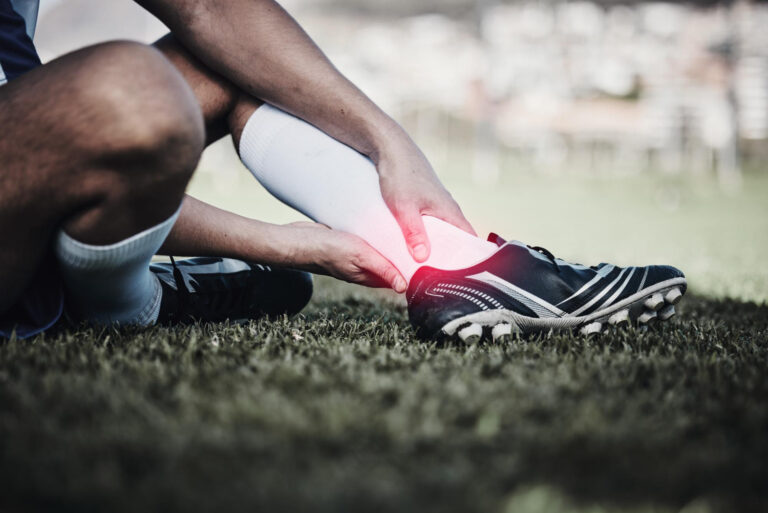
Without timely and proper treatment, sports injuries can hinder your progress significantly, no matter what your level of participation is. Whether your symptoms are due to an accident, overuse, or poor technique, our sports injury clinic in Phuket is equipped with the most advanced, cutting-edge equipment to treat pain and help you get back to the activities you love.
Sports injuries are common and can occur throughout your body to bones, muscles, tendons, ligaments and other structures. You can treat many minor injuries at home with rest, ice, compression, elevation and over-the-counter pain medications. But some injuries require medical treatment, such as immobilization, physical therapy and surgery.
Exercise is important to good health, but people often get hurt when participating in sports or other physical activities. A sports injury involves damage to part of your body due to sports, exercise or athletic activities.
A sports injury can be acute (sudden) or chronic (develop over time).

Sports injuries can happen to anyone, particularly people who:
Sports injuries can affect any part of your body. They most often affect:
There are many types of sports injuries. Some of the most common are:

Sports injuries have many causes, including:
The signs and symptoms of a sports injury depend on the type of injury. Common symptoms include:
To diagnose a sports injury, your healthcare provider performs a physical exam. They’ll ask questions about what happened and what symptoms you’ve had. They’ll also look at the injured area, possibly testing how it moves.
Depending on the type of injury you have and how severe it is, your healthcare provider also may recommend imaging tests. An X-ray, CT scan or MRI can create pictures of the structures inside your body. The images will help your healthcare provider understand, diagnose and treat your specific injury.
Treatment for sports injuries varies widely, depending on the type and severity. Many sports injuries heal in a few days or weeks with rest and at-home strategies.
But for more serious injuries, treatment may involve:
There are many ways you can help prevent sports injuries.
If you get hurt during physical activity, stop playing or exercising immediately. You can cause more harm if you keep going.
Most minor sports injuries get better in a few days with the RICE method:
You also might consider taking nonsteroidal anti-inflammatory drugs, such as ibuprofen or naproxen.
As you start to feel better, go back to sports and other activities slowly. Make sure you can move the area without pain or stiffness. This will help ensure that you don’t injure yourself again or make the injury worse.
If you’re struggling with Sports Injuries and seeking a non-invasive, effective solution, shock wave therapy could be the answer you’ve been looking for. Consult with a qualified healthcare professional at Siam Clinic Phuket to determine if this treatment is suitable for your specific condition. Don’t let Sports Injuries hinder your productivity and quality of life; explore the benefits of shock wave therapy and take a step towards a pain-free, healthier office experience.
Engaging in physical therapy can contribute to an improvement in chronic pain from the very first session. However, to enhance treatment effectiveness, it is recommended to undergo continuous physical therapy sessions as advised by medical professionals or physical therapists. Typically, positive results can be anticipated within the initial 5-6 sessions, especially for individuals with moderately severe symptoms.
At Pain Clinic Near Me, we employ state-of-the-art physical therapy tools to treat our clients, providing relief from pain starting with the first session—without the need for medication or surgery.
Pain Clinic Near Me is a physical therapy and rehabilitation clinic overseen by licensed physicians. We are able to provide medical certificates to our clients for the purpose of health insurance claims or outpatient group insurance (OPD).
Pain Clinic Near Me offers parking space for up to a hundred vehicles, providing convenient and hassle-free access for those driving in for our services.
Payments for services at Pain Clinic Near Me can be made in cash, by card, or through bank transfer. We offer multiple convenient options to suit your preferences.
© All Rights Reserved.